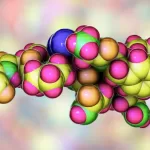University of Barcelona Study Shows Promise for Pemafibrate in Treating Liver Disease
A groundbreaking study led by researchers at the University of Barcelona has unveiled a potential new treatment for metabolic dysfunction-associated steatotic liver disease (MASLD), a condition that affects approximately one in four individuals worldwide. Currently known as non-alcoholic fatty liver disease, MASLD is a multifaceted disorder often lacking specific treatment options. The findings, published in Biomedicine & Pharmacotherapy, suggest that pemafibrate, a drug primarily used in Japan to manage lipid levels in hyperlipidemia patients, could offer hope for those suffering from this prevalent liver condition.
Drug Repurposing: A Strategic Approach
Led by Professor Juan Carlos Laguna from the Faculty of Pharmacy and Food Sciences, the research team emphasizes the potential of drug repurposing—utilizing existing medications to address new health challenges. Pemafibrate, typically prescribed to manage cholesterol and triglyceride levels, has shown encouraging results in laboratory models, presenting a promising avenue for MASLD treatment.
“MALSD is a complex disorder characterized by hepatic steatosis, which can escalate to cirrhosis, liver cancer, or liver failure. Despite lifestyle modifications, effective pharmacological options are scarce,” Professor Laguna stated. “Repurposing drugs with established safety profiles can significantly expedite the development of new treatments.”
Promising Preclinical Findings
The study utilized female rat models to investigate the efficacy of pemafibrate in preventing the onset of hepatic steatosis. Results indicated that pemafibrate enhances fatty acid catabolism and facilitates cholesterol clearance in the liver, demonstrating a favorable safety profile. This research also highlighted the importance of understanding sex differences in chronic diseases, which could help address gender biases in biomedical research.
Pemafibrate functions as a modulator of the nuclear receptor PPAR-α (peroxisome proliferator-activated receptor alpha), crucial for the hepatic oxidation of fatty acids and the metabolism of triglycerides and cholesterol, which tend to accumulate in liver diseases.
Future Research Directions
The findings position pemafibrate as a strong candidate for therapeutic repositioning. Although limited exploratory clinical studies have previously investigated its effects on liver health, further studies are essential to ascertain its efficacy in more advanced liver diseases, particularly in cases involving inflammation and fibrosis associated with metabolic associated steatohepatitis (MASH).
“We are now keen to explore pemafibrate’s effectiveness and safety in more complex models of liver disease, which will be pivotal in advancing our understanding of its therapeutic potential,” concluded Professor Laguna.
This research not only paves the way for innovative treatment strategies but also underscores the significant role of drug repurposing in addressing pressing health issues affecting millions globally.
Reference: Bentanachs, R., Miró, L., Sánchez, R. M., Ramírez-Carrasco, P., Amat, C., Alegret, M., Pérez, A., Roglans, N., & Laguna, J. C. (2024). Pemafibrate abrogates SLD in a rat experimental dietary model, inducing a shift in fecal bile acids and microbiota composition. Biomedicine & Pharmacotherapy, DOI: 10.1016/j.biopha.2024.117067.












